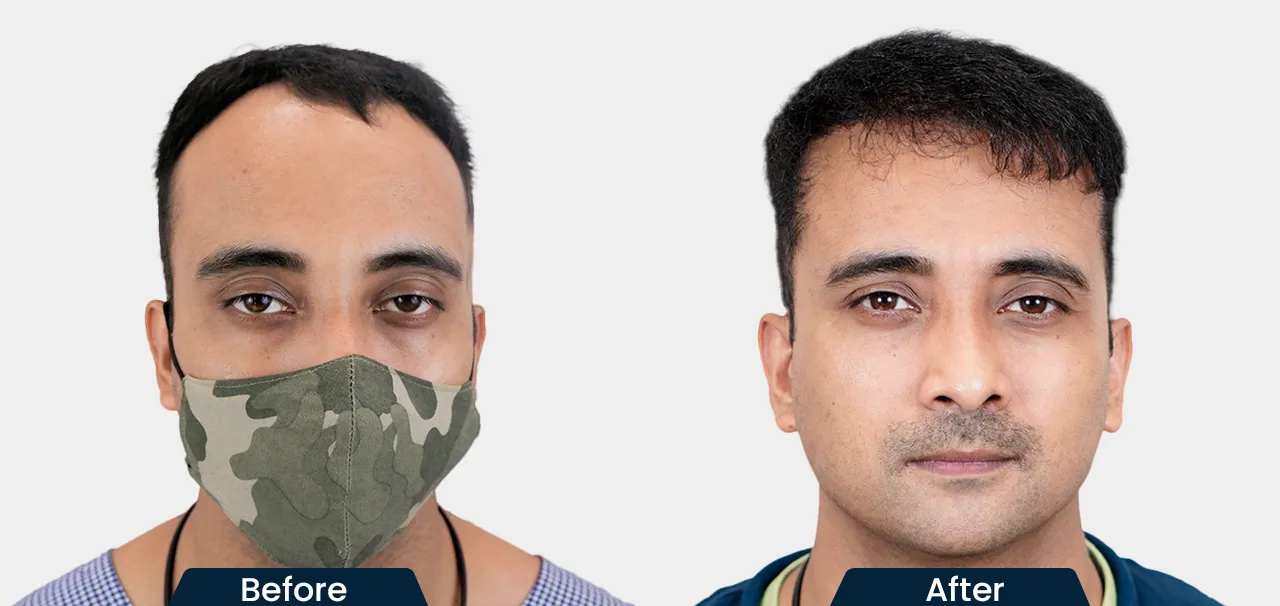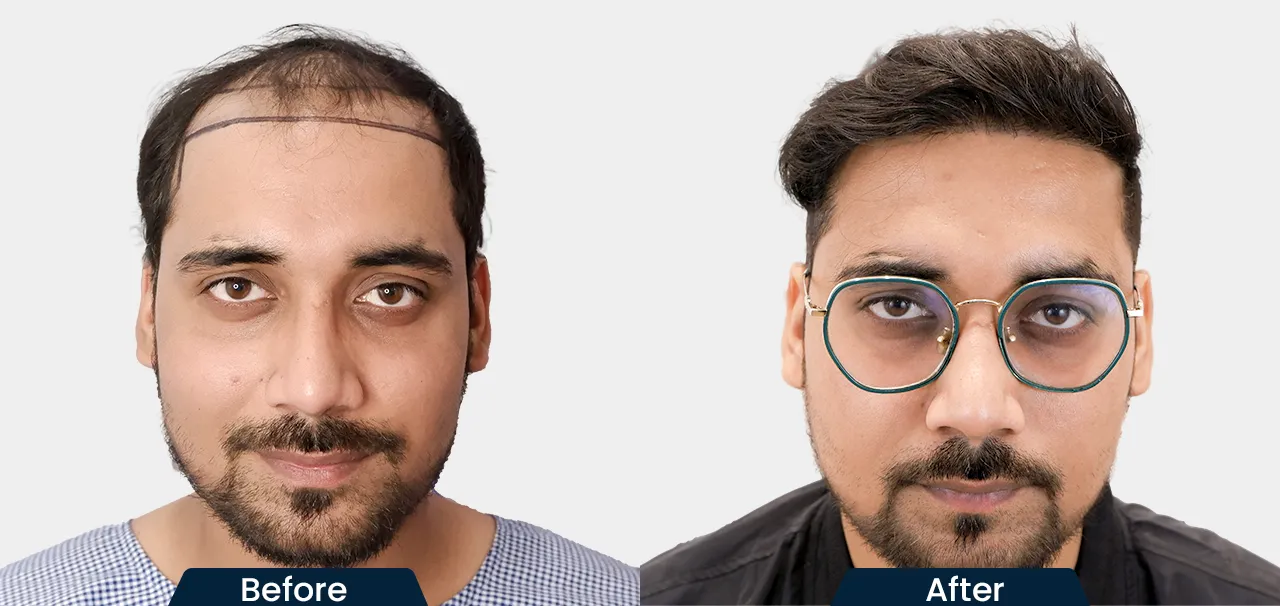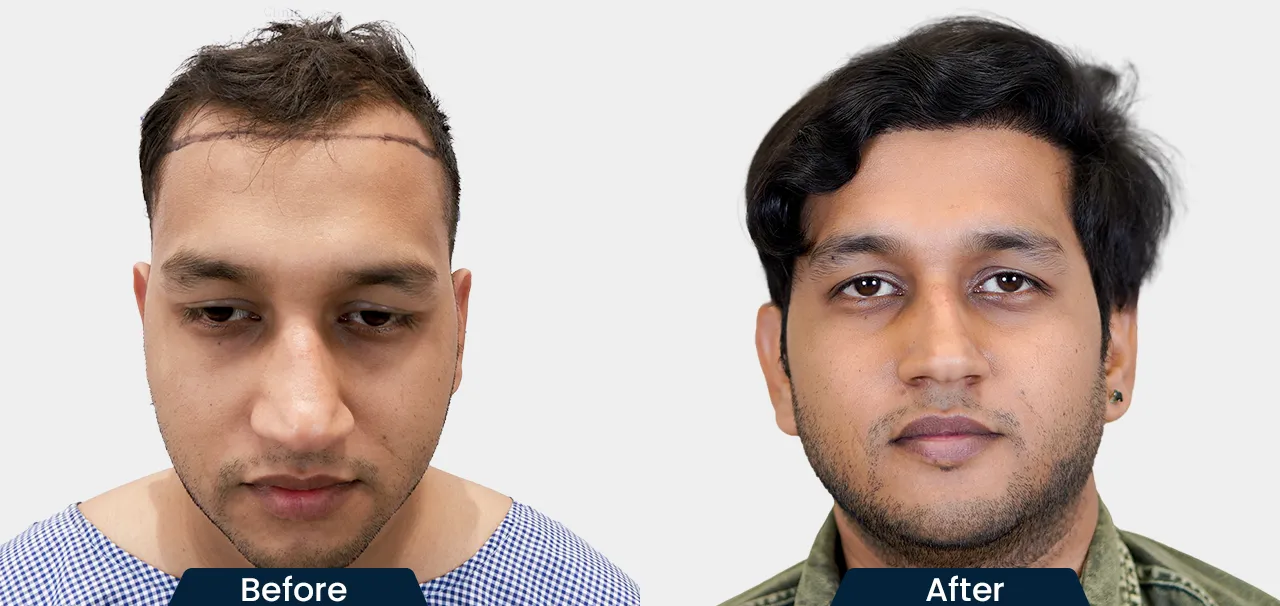When we think about hair loss or baldness, the first thing that often comes to mind is male pattern baldness, the common, genetic, and hormonal type of hair loss. However, hair loss can occur for many other reasons, and one of the most intriguing and misunderstood types is Alopecia Areata.
This condition doesn’t just affect adults; it can occur in children, men, and women of all ages, from as young as 2 years old to even 80. If you or someone you know is experiencing sudden bald patches on the scalp, beard, or other body parts, it might be Alopecia Areata.
In this guide to Alopecia, we’ll explore everything you need to know, including its causes, risk factors, symptoms, diagnosis, and modern treatment options.
What is Alopecia Areata?
Alopecia, in general, refers to any form of hair loss. Alopecia areata, however, is a specific type characterized by distinct, often coin-shaped, patches of hair loss on the scalp, beard, eyebrows, or any hair-bearing area of the body. This condition occurs when the body’s immune system mistakenly attacks its own hair follicles, leading to hair loss. It is classified as an autoimmune disorder, and its exact cause remains unknown.
There are several types of alopecia areata, including:
- Patchy Alopecia Areata: The most common form, where hair loss occurs in small, round patches on the scalp or body.
- Alopecia Totalis: Complete loss of hair on the scalp.
- Alopecia Universalis: Loss of all body hair, including eyebrows, eyelashes, and body hair.
Alopecia areata affects approximately 2% of the global population, meaning about 2 out of every 100 people may experience it at some point in their lives. It can develop suddenly, sometimes overnight, and is often first noticed by a barber, hairdresser, or family member.
Causes and Risk Factors of Alopecia Areata
The precise cause of alopecia areata is not fully understood, but its autoimmune nature means that the body’s immune system, which typically fights off infections, mistakenly targets hair follicles. This leads to inflammation and hair loss. While there’s no single trigger, several risk factors increase the likelihood of developing alopecia areata:
- Genetics: A family history of alopecia areata or other autoimmune conditions increases the risk. Scientists have identified certain genes associated with the condition, indicating a genetic predisposition.
- Autoimmune Conditions: People with conditions like diabetes, thyroid disease, vitiligo, or rheumatoid arthritis are more likely to develop alopecia areata.
- Stress: While stress alone doesn’t cause alopecia areata, it can act as a trigger in individuals with a genetic predisposition. High levels of emotional or physical stress may exacerbate the condition.
- Age and Gender: Alopecia areata can affect anyone, from toddlers to seniors, and occurs equally in men and women. It is more commonly diagnosed in children and young adults, though it can appear at any age.
Because the condition can develop without warning, it’s often described as a “matter of chance,” with no specific lifestyle factor, vitamin deficiency, or medication definitively linked to its onset.
Symptoms of Alopecia Areata
The hallmark symptom of alopecia areata is the sudden appearance of round or oval patches of hair loss, typically the size of a coin. These patches are usually smooth and may appear on the scalp, beard, eyebrows, or other areas with hair. Other symptoms include:
- Patchy Hair Loss: The most common presentation, where one or more bald patches form without any preceding rash, redness, or itching.
- Diffuse Hair Loss: In rare cases, known as alopecia areata incognito, hair loss may be more widespread and mimic other types of hair loss, such as male or female pattern baldness. This form is harder to diagnose and often requires a dermatologist’s expertise.
- Fluctuating Patterns: The condition can be unpredictable. Patches may remain stable, regrow hair spontaneously, or new patches may develop over time.
In most cases, there are no accompanying symptoms like itching or discomfort, which helps distinguish alopecia areata from other scalp conditions.
Diagnosing Alopecia Areata
Diagnosing alopecia areata is typically straightforward and based on clinical evaluation. A dermatologist can often identify the condition by examining the affected area. Key diagnostic methods include:
- Clinical Examination: The appearance of smooth, round bald patches is usually sufficient for a diagnosis.
- Trichoscopy: A non-invasive procedure where the scalp is examined under high magnification to look for specific signs, such as yellow dots or exclamation mark hairs (short, broken hairs that taper at the base).
- Skin Biopsy: Rarely needed, a biopsy may be performed to rule out scarring alopecia, a different type of hair loss that causes permanent damage to hair follicles.
In most cases, no blood tests or extensive investigations are required, as the diagnosis is primarily clinical.
Treatment Options for Alopecia Areata
The good news is that alopecia areata is treatable, and in many cases, hair regrows on its own without intervention. Treatment decisions depend on the extent, location, and progression of the hair loss. Here are the main approaches:
1. Observation (No Treatment)
For small, isolated patches, especially in less visible areas like the back of the scalp or lower beard, dermatologists may recommend waiting 3 to 6 months. Many cases of patchy alopecia areata resolve spontaneously within this period as the immune system stops attacking the hair follicles.
2. Topical Treatments
For limited hair loss (1–3 patches), topical treatments are often the first line of defense. These include:
- Corticosteroid Creams or Ointments: Applied directly to the affected areas, these reduce inflammation and suppress the immune response.
- Topical Immunotherapy: In some cases, chemicals like diphencyprone (DPCP) are used to stimulate an allergic reaction that redirects the immune system away from the hair follicles.
3. Intralesional Steroid Injections
For cosmetically significant areas (e.g., the mustache, front of the scalp), dermatologists may inject corticosteroids directly into the bald patches. These “depo” injections are administered every 3–4 weeks and are highly effective, with results often visible within 3–4 months. When performed correctly, these injections have minimal systemic side effects, as the medication stays localized.
4. Systemic Treatments
If alopecia areata is rapidly progressing or involves multiple patches (more than 5 per month), systemic treatments may be necessary. These include:
- Oral Corticosteroids: Used to suppress the immune system in severe cases.
- Janus Kinase (JAK) Inhibitors: A newer class of medications that show promise in treating alopecia areata by targeting specific immune pathways. These are prescription-only and require close monitoring by a dermatologist.
- Other Immunosuppressants: Medications like methotrexate or cyclosporine may be considered in severe cases.
Systemic treatments are typically reserved for extensive or rapidly worsening cases and require regular blood tests to monitor for side effects.
5. Cosmetic Solutions
In cases of alopecia totalis or universalis, where hair loss is widespread or complete, medical treatments may be less effective. Cosmetic options include:
- Hair Systems or Wigs: Custom-made wigs or hairpieces can provide a natural look.
- Microblading or Tattooing: Used to recreate eyebrows.
- Artificial Eyelashes: A practical solution for eyelash loss.
Important Note: Hair Transplants Are Not Suitable
Hair transplants are not recommended for alopecia areata, as the autoimmune process can attack transplanted hair follicles, leading to further hair loss. This makes medical treatment the only viable option for managing the condition.
Ongoing Research and Future Treatments
Alopecia areata is an active area of research, with scientists exploring new medications and therapies. JAK inhibitors, for example, have shown significant promise in clinical trials, offering higher efficacy and fewer side effects compared to older treatments. As research progresses, more effective and targeted therapies are likely to become available, giving hope to those affected by this condition.
Living with Alopecia Areata
While alopecia areata can be distressing, especially when it affects visible areas, it’s important to remember that it’s a manageable condition. Consulting a dermatologist is crucial for an accurate diagnosis and a personalized treatment plan. Regular follow-ups are essential, as the condition can be unpredictable, and treatment plans may need adjustments over time.
At Hairfree & Hairgrow Clinic, we understand how deeply hair loss can affect your confidence and self-image. Our team of experienced dermatologists and trichologists offers personalized medical solutions for all types of hair loss, including Alopecia Areata, hormonal hair loss, and patchy baldness.
Don’t wait for hair to grow back on its own. Take expert help today!
Book your consultation with Hairfree & Hairgrow Clinic and start your journey toward healthy, confident hair regrowth.
Conclusion
Alopecia areata is a common autoimmune condition that affects millions worldwide, causing patchy or, in rare cases, complete hair loss. While its exact cause remains unknown, factors like genetics, stress, and other autoimmune conditions can increase the risk. With a range of treatment options from topical creams to advanced therapies like JAK inhibitors, most cases can be effectively managed.
If you suspect you have alopecia areata or notice sudden hair loss, consult a dermatologist for expert guidance. With the right care, this condition doesn’t have to define you.
Written By
MBBS, MD
Dr. Pratibha Pradhan is a renowned hair restoration specialist with extensive experience in diagnosing and treating various hair loss conditions. Her expertise in the guide to Alopecia helps patients understand its causes, symptoms, and effective treatment options for achieving long-term scalp health and natural hair regrowth.
Disclaimer
We’ve made all possible efforts to ensure that the information provided here is accurate, up-to-date and complete, however, it should not be treated as a substitute for professional medical advice, diagnosis or treatment. See Detailed Disclaimers Here.










